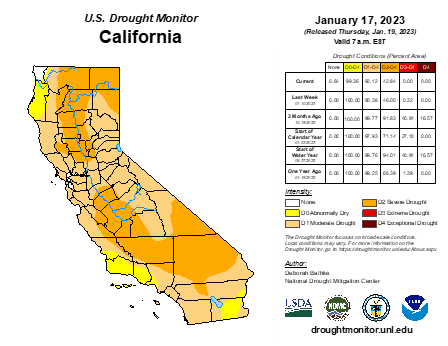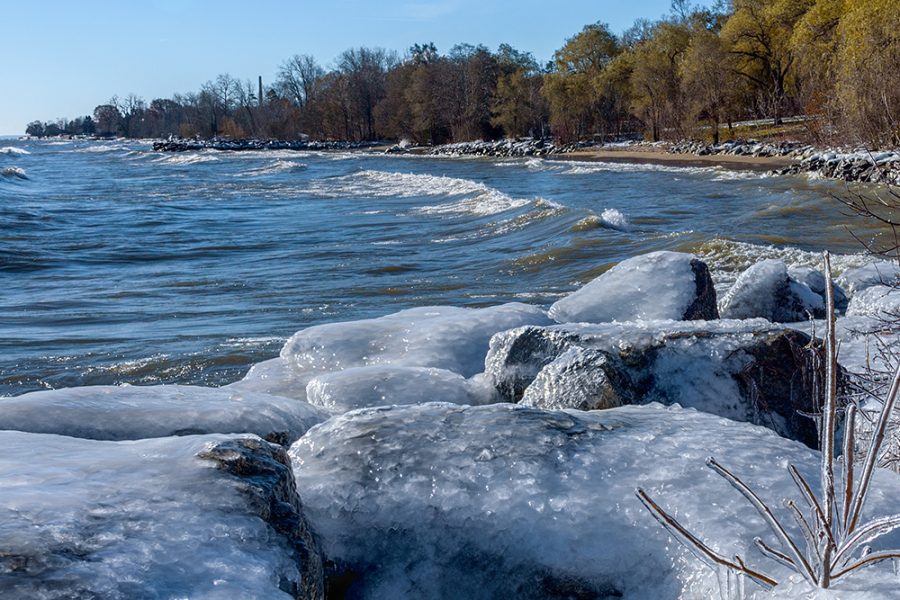The Department of Water Resources announced an increase in allocations from 5 percent to 30 percent of requested water. For agriculture, the increased allocations mean approximately 10 million acre feet of water for the nearly 10 million acres of irrigated farmland in the state or enough water to cover every acre of irrigated farmland with one foot of water if applied at once.
However, drought is more complex than surface water levels with considerations needed for groundwater and soil moisture. Overall, the state has received at an average of nearly 12 inches of rain in the last three weeks. So, allocations could be reduced again depending upon how the spring progresses.

According to the U.S. Geological Survey, the best medicine for drought is several soaking rains over a long period of time. A single rainfall can start the repair process but most of the benefit is like putting makeup on – only a surface fix. To truly end a drought, long-term moisture is key.
A combination of intermittent rains that allow water to soak into the soil and a slow snow melt to continue facilitating the groundwater recharge are the real keys to ending a drought.
The Sierra statewide snowpack was 240 percent of normal on Jan. 20 and the South Sierra snowpack was 283 percent of normal on the same day. The record snowfall, if the melt is slow and steady, will certainly help to alleviate the drought.
The U.S. Drought monitor showed a significant improvement in overall statewide drought measurements in its most recent report. No areas of the state were reported in the extreme or exceptional drought categories and a small portion of Del Norte County was reported as having no signs of drought.
The next key for the state to take advantage of the rain- and snowfall this year is to expand and improve the reservoir system. Water storage in dry regions is the difference between success and failure. The water woes of the state have created a contraction of the agricultural business community which represents $51.1 billion in income for the state. To recapture some of what was lost, providing surface and groundwater solutions to take advantage of the current influx of moisture is the best means by which to do so.
While the drought is far from over, the current conditions are a good start to getting California’s farmers back on track to successfully irrigate the fruits and vegetables for which they are known.
Pam Lewison is the Director of Agriculture Research at the Washington Policy Center and a Pacific Research Institute fellow. She co-owns and operates a family farm in Eastern Washington state.


